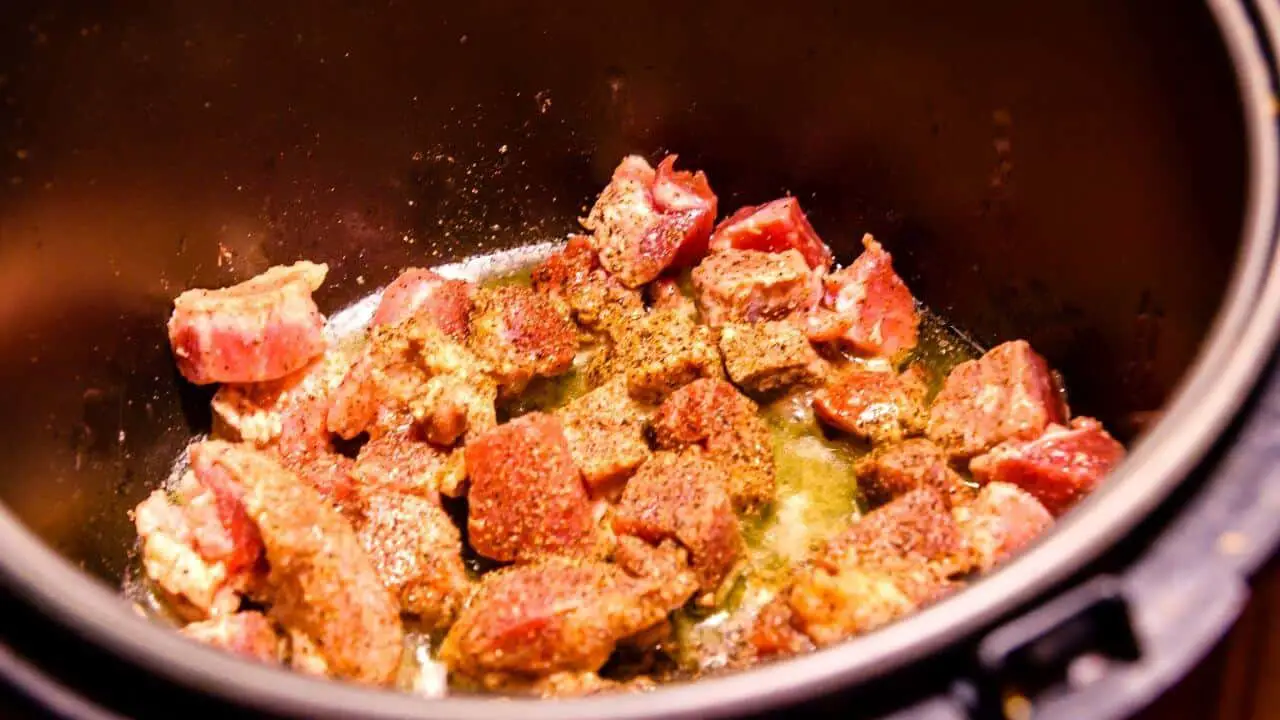Last Updated on May 19, 2023 by River Tree Farms
Slow cooking meat is a fantastic idea. Whether you are a professional chef or just learning how to cook, it will help preserve the flavors and tenderness of your meat. However, it isn’t always as simple as it seems. You have to pay attention to the cuts of meat, type of meat, and cooking time for the best results.
The smallest details can have a major impact on the final outcome. You may end up with fall-apart tender meat or tough, dry meat that is almost impossible to ingest. If you are wondering how to fix tough meat in the slow cooker, keep reading to find out.
Tips to Fix Dry Or Tough Meat
You can salvage a beef roast and other pot roasts by adding more cooking liquid. With tough meat, however, you need to do things differently. Allow your meat to cool, and use your fingers or forks to pull it apart. Use the shredded meat to prepare new dishes. Here are other tips to salvage your meat.
1. Recook Under a Low Flame
Use low heat when recooking your meat to preserve nutrition and make it tender. You can use herbs and oils to improve on flavors. Follow these steps to cook your meat in low flame.
- Braise your flame and put the meats at the bottom of your slow cooker.
- Start cooking with sufficient liquid and check on the meat every 30 minutes. Since it is partially cooked, you must be vigilant to avoid overcooking.
2. Cook With Wine or Broth Instead of Sauce
Instead of sauce, consider using broth or wine to recook your meat. It is a clever way to reintroduce flavors and soften the meat. After browning your veggies and meat, add some wine. Doing so early in the simmering process helps cook the alcohol out.
3. Saute and Steam
If your meat is tough, it has probably lost some of its flavors. Sautéing will help reintroduce them. It seals in some moisture as well. When you are done, steam it in a slow cooker for about 20 minutes.
4. Add Some Liquid
If your meat is tough because you didn’t add enough water initially, try adding more liquid. If you cook without additional liquid, it will remain tough. However, you should be careful not to add too much water.
Avoiding Dry and Tough Meat In Slow Cooker
Slow cooking your meat is a lot more than just throwing everything in the pot and waiting. If you aren’t careful, you may end up disappointed. Here are a few tips to keep your meat flavorful and tender.
Brown the Meat First
Start by browning your meat. When the meat surface is caramelized, it preserves all the flavors. If you add vegetables, layer them properly to cook well and retain a crisp finish. You don’t want them to be mushy. Your meat goes to the bottom of the pan, and the veggies stay on top of the meat.
Pick the Right Cuts
The ideal cuts of meat for slow cooking are fatty and well-marbled. Meat on the bone is a good option as well. Avoid skinny parts as they are likely to dry up. Go for brisket, chuck roast, and stew beef when cooking beef.
For chicken, opt for the thighs. If you prefer pork, go for pork ribs. The best thing about tougher cuts of meat is that they are cheaper.
Keep the Heat Low and Cook Slow
Your meat needs to be closest to the source of heat. Therefore, it should be at the bottom of the slow cooker. Layer other ingredients on top and set the heat to low. The ideal cooking time for juicy meat is six to nine hours. The long and slow braise breaks are enough to break down fat and connective tissue.
Use Enough Liquid
Even though your slow cooker will help retain the fluids from your meat, you need to add enough cooking liquid. You can use water, vegetable or meat stock, or wine. While your food doesn’t need to be submerged in liquid, you should have at least a cup. When trying to make the meat extra saucy, the liquid should go about 1/3 cup.
You may find slow cooker meat tough if you add so much liquid that the meat is boiling instead of braising.
Stay Patient
Slow cooking takes time, and you have to be patient. While it is okay to check the dish when it is halfway through, you shouldn’t lift the entire lid off. If you keep opening the lid, you release moisture and heat, hence interfering with the cooking process. You could affect the meat texture.
Don’t Cut the Meat Into Small Pieces
If you cut your meat into small pieces, they may be unable to withstand long cooking hours. Tiny pieces of meat dry out faster than bigger pieces.
The Science Doesn’t Lie-Slow Cooked Meat Is Better
There are scientific reasons to support the fact that slow cooking meat yields better results. The tenderness of your meat comes from collagen melting. As collagen melts, it converts to gelatin. This is a rich liquid that enhances the flavors of your meat and improves its texture.
Collagen can only liquefy if it is heated at low temperatures for a long time. Using high heat will not yield the same results. You are likely to lose the flavors and silky texture.
Another benefit of slow-cooking meat is that you lose less moisture. All the liquids in your crockpot stay in your meal. You don’t need to worry about your meat drying up.
Finally, using your slow cooker means your meat will cook evenly all through. A piece of meat roasted on high heat may have a well-cooked crust even though the insides aren’t well-cooked. With low and slow heat, every part of the meat is evenly done.
Conclusion
Slow cooking your meat seems easier than it really is. You must pay attention to the cuts of meat you use, the amount of cooking liquid you use, and the cooking time. If you get everything right, you’ll end up with tender and flavorful meat. If, however, something goes wrong and your meat turns out to be tough, you can learn how to fix tough meat in the slow cooker. You don’t need to put up with tough or dry meat with the above tips.

